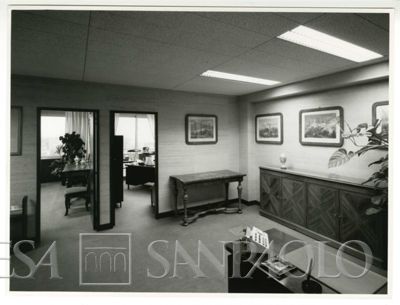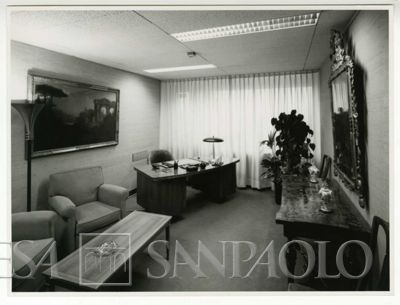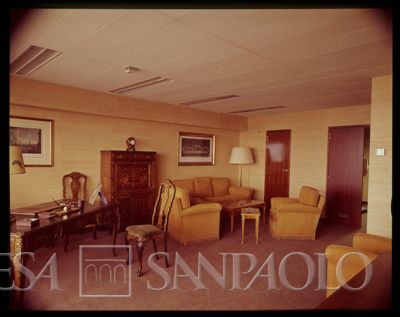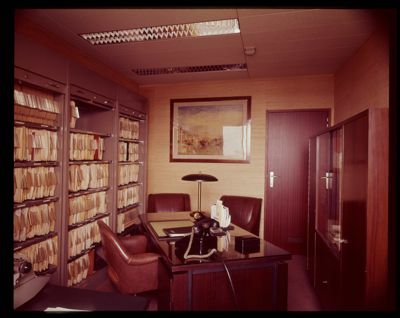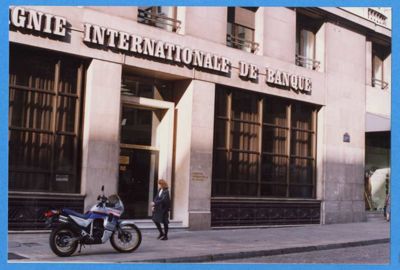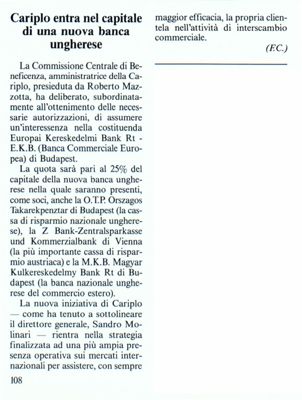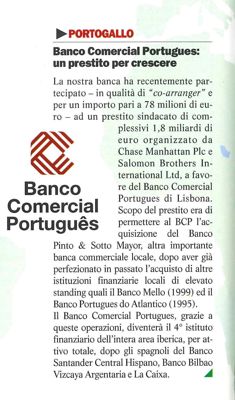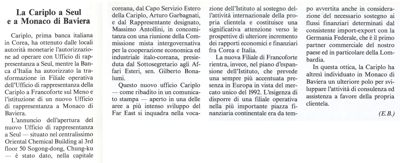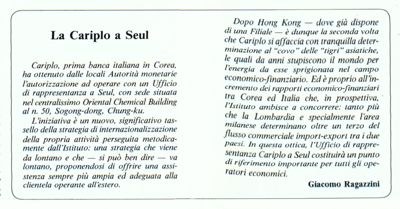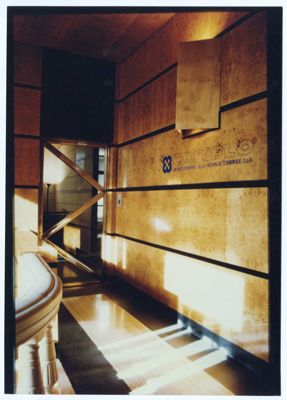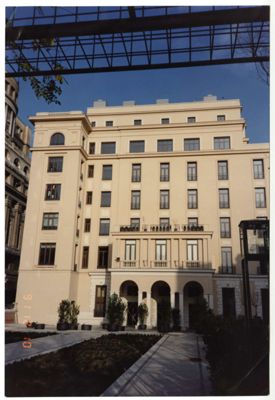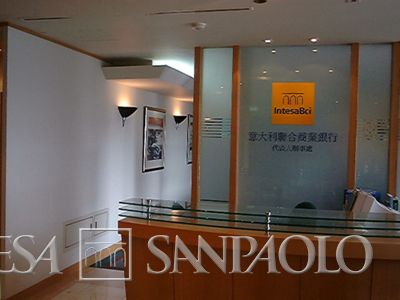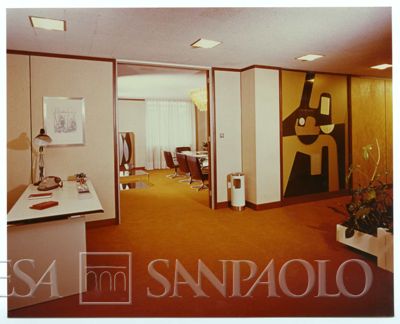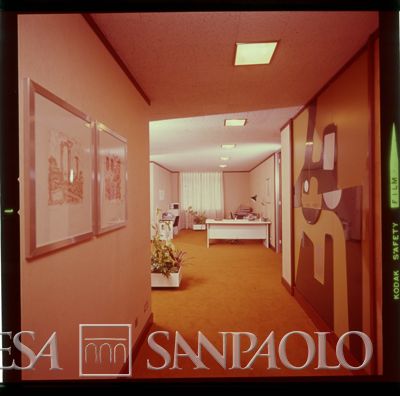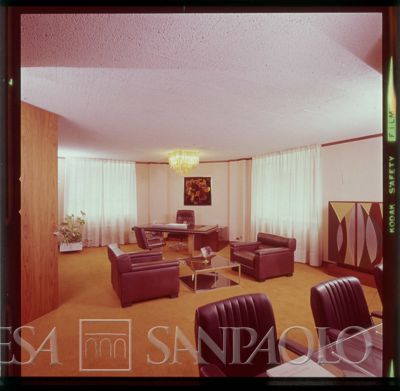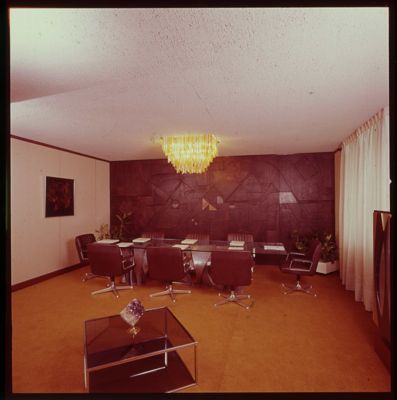| description |
From the time it was founded in 1823, CARIPLO (Cassa di Risparmio delle Provincie Lombarde - Savings Bank of the Lombard Provinces) followed the same model as other Italian savings banks, which, even though not prohibited from doing so by bank laws, simply disregarded the possibility of cultivating working relationships overseas in their statutes, focusing instead on local initiatives and engaging outside of Italy for charitable purposes alone.
It was only after World War II that the bank began to take part in international financial flows, even though initially Banca d'Italia, Italy's central bank, authorized it to carry out only basic services and currency exchange activities by designating "banca delegata" in 1946. After being made a "banca aggregata" in 1952, CARIPLO gained the ability to operate directly through correspondent banks, to extend lines of credit, and to support its customers' import/export activities. These new responsibilities led it to set up a special International Services Bureau (Servizio Estero) in 1953.
Thanks to CARIPLO's policy of decentralization and its methodical training of its personnel, in just a few years' time the bank's foreign transactions had increased fivefold, leading to its promotion by the Banca d'Italia to a "banca agente" (agent bank) in 1960. Among the various international initiatives it embarked on were traveler's cheque in Italian lire, created in 1957 for foreigners visiting Italy; special checks for the remittances of Italians working overseas, produced especially to meet the needs of émigrés to Northern European countries; and financial support for the international import/export trade.
CARIPLO established its first direct presence overseas in 1961, opening a representative office in Brussels. The bank chose the city where the European Economic Community and numerous other international organizations were headquartered so that it could keep its finger on the pulse of economic and financial policy, and play a leadership role in coordinating the activities of its fellow savings banks in the common market.
Between the 1970s and ‘90s, the representative offices set up by CARIPLO overseas were key in strengthening relations between itself and its partner correspondent banks, acting as a focal point for, and advising, companies already conducting business abroad as well as those seeking to move beyond national borders. In 1973, a new representative office was set up in London, where in 1981 CARIPLO also became the first Italian saving bank to open a branch.
In 1979 CARIPLO disembarked in New York in order to meet the needs of its many customers doing business with the United States, to strengthen its relations with its New York-based partner correspondent banks, expanding into new business sectors, and to better assist the export consortia of which it was a member to achieve their goals in the American market.
CARIPLO never set up any offices in Latin America, opting to keep an eye on the region from its New York branch. However, it focused a great deal of attention on countries in East and Southeast Asia, as it would have been imprudent to ignore the economic shift toward the Pacific Basin and the persistently high growth rates seen there starting in the 1980s. Opening offices in Hong Kong (1982), Beijing (1987), Seoul (1989), Tokyo (1992), Shanghai (1994), and Taipei and Singapore (1997), the bank created a sort of Asian "quadrilateral" tasked with overseeing this area of exceptional economic promise.
The strength of CARIPLO's office and correspondent bank networks grew over time, peaking in the 1980s and ‘90s thanks in part to its acquisition of stakes in several other European banks (Bankhaus Löbbecke & Co. in Berlin, Europai Kereskedelmi Bank Rt. EKB in Budapest, Banca Jover in Barcelona, Cariplo Bank International SA in Luxembourg and Compagnie Internationale de Banque in Paris).
Of special note among CARIPLO's many overseas initiatives was the educative role it played in Africa through its 1973 creation of the Center for Financial Aid to African Countries (Centro per l'assistenza finanziaria ai Paesi Africani), known by it acronym Finafrica.
With the 1998 creation of Banca Intesa through the merger of CARIPLO and Banco Ambrosiano Veneto, the new Group took over the banking and financial activities in international markets of the two formerly independent banks, necessitating a reorganization of CARIPLO's overseas network: while most of its offices and its license were transferred to Banca Intesa, others in areas where an operational presence was no longer deemed strategic were closed or unified.
After four decades, CARIPLO's overseas activities came to an official end on 11 December 2000, with its merger with Banca Intesa, BAV and Mediocredito Lombardo. Following the May 2001 merger of Banca Commerciale Italiana with Banca Intesa, the newly formed group, IntesaBci, became the new Italian leader in terms of international offices and services. |







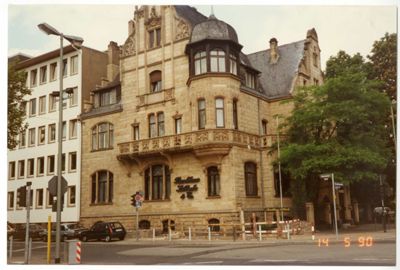
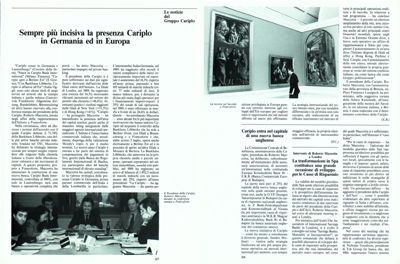
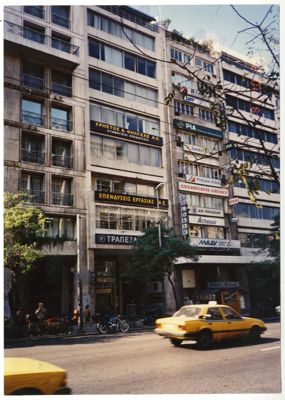
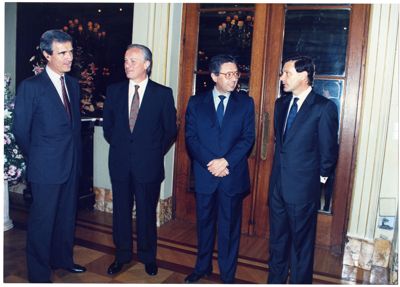

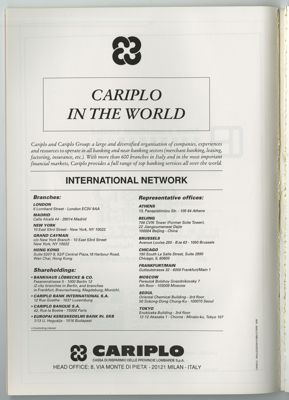
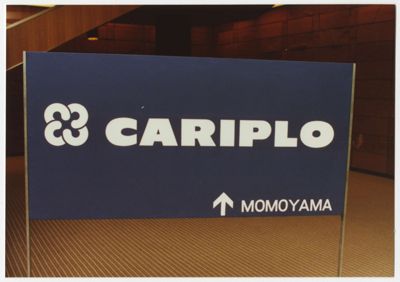
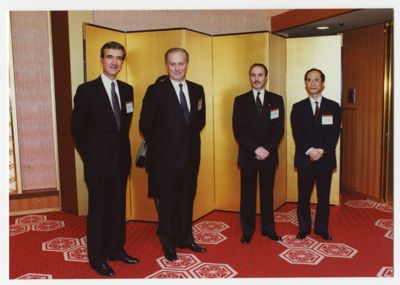
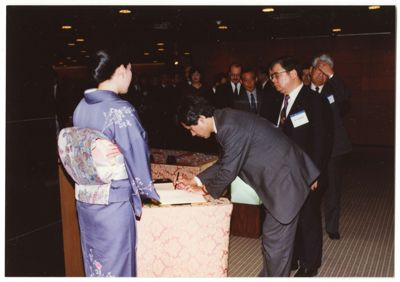


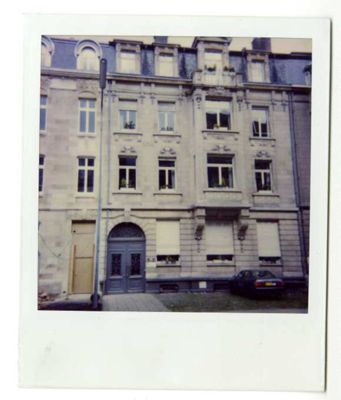
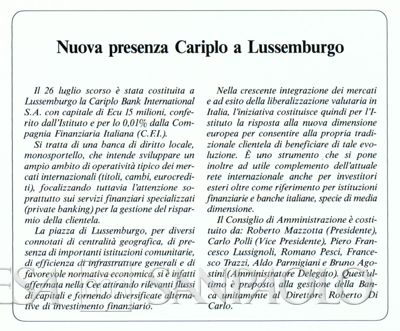

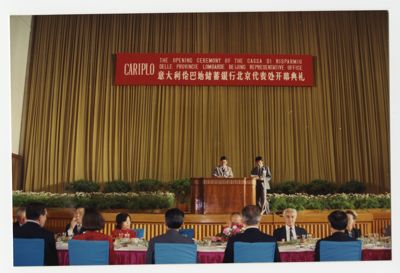
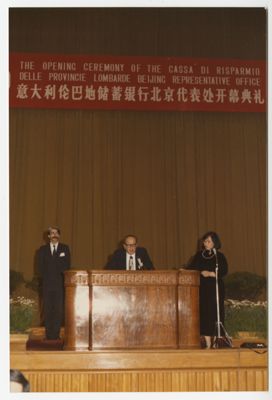









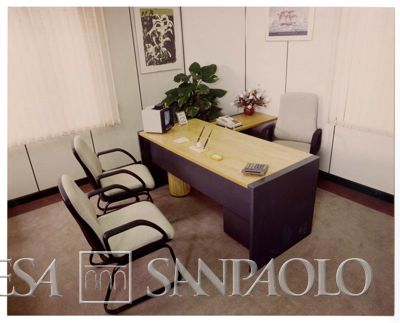



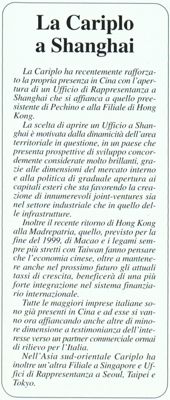



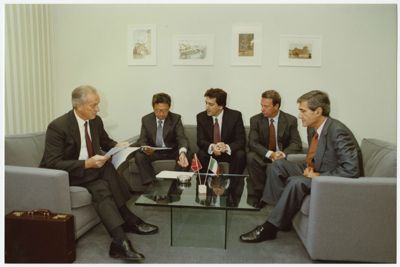


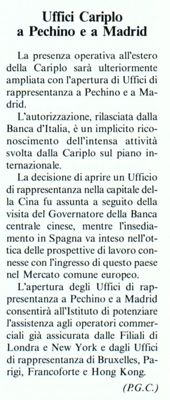
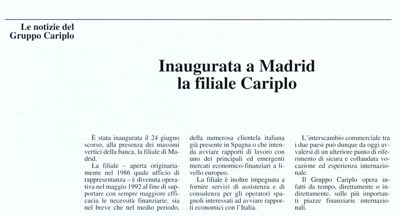





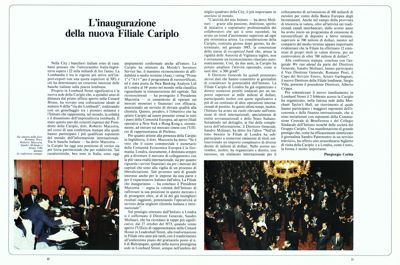





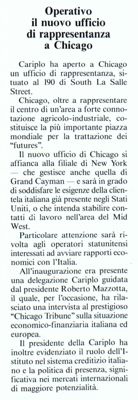

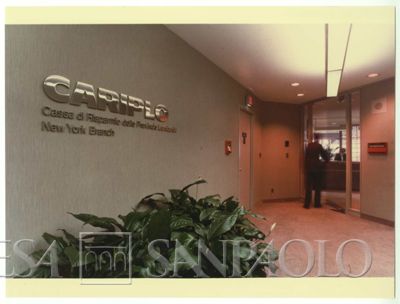











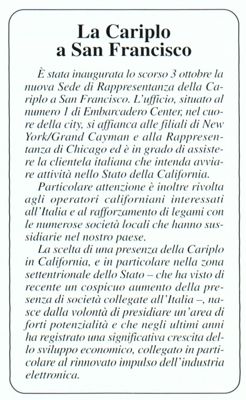
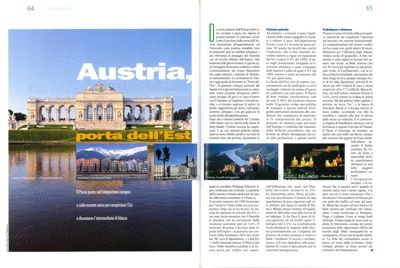

![Cariplo, Brussels representative office on [327 Avenue Louise], 1973-1992 (photograph by Les frères Némerlin)](/world-map/image-t/IT/ISP/FT00001/0012126/IT.ISP.FT00001.0012126.0002.jpg)

